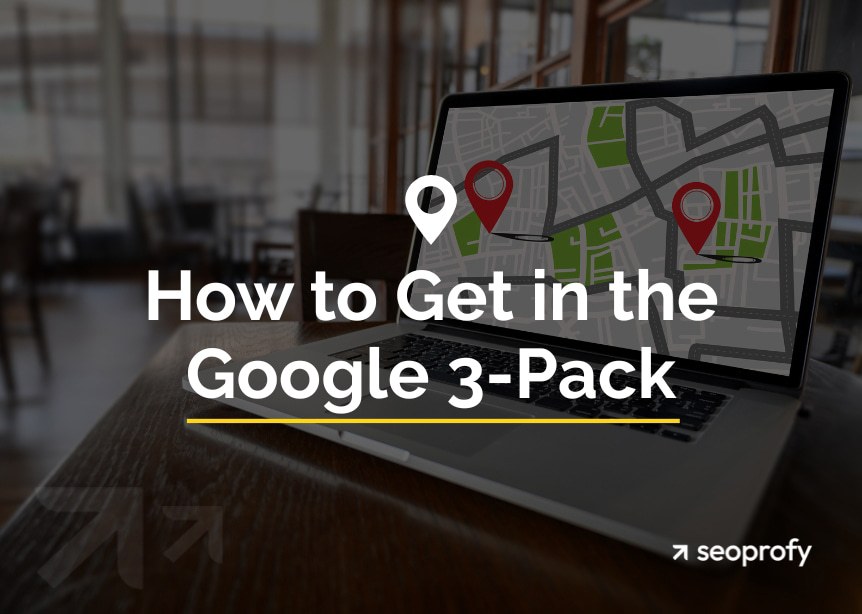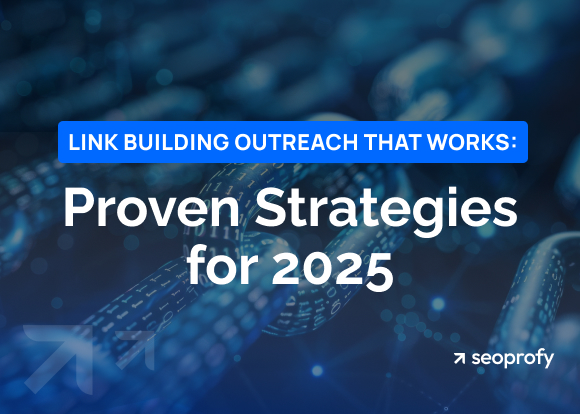Planning to grow in new markets but stuck with low visibility? International link building helps your site get picked up by local search engine algorithms and trusted by users. While backlinks are not the only ranking factor, they remain one of the strongest signals of relevance and authority, especially when trying to earn visibility in competitive foreign markets.
In this guide, we’ll walk through what makes a good international backlink, how to adapt outreach strategies for different countries, which risks to avoid, and what actually works based on current SEO practices. So, if your goal is to get consistent visibility, clicks, and leads in international markets, here’s how to do it right.
- International link building only works when it’s targeted by market, language, and search intent.
- Local backlinks improve rankings and trust in country-specific search results.
- Strong strategies rely on market research, competitor analysis, and localized outreach.
- Using black-hat tactics or irrelevant links can damage your SEO performance.
- Consistent results come from tracking performance, adapting content, and building relationships in each region.
What Is International Link Building?
Link building for international SEO is the process of earning backlinks from relevant websites in different countries and languages to increase online visibility globally. These links help search engines understand that your content is relevant and trusted in specific regions beyond your home market and start pushing your pages up in regional SERPs. In fact, 71% of marketers already use this tactic for their international websites.
When Does It Make Sense?
International link building matters when your business aims to grow outside your home country. It’s especially important if:
- You plan to launch localized versions of your site
- You want to reach international audiences through organic search
- You’re seeing limited traction in international markets despite translating content
- Your competitors in target countries have strong local link profiles
What You Get from It
If you recognized your situation in the previous section, you’re likely at the stage where international backlinks can start driving meaningful impact. But what do they really deliver? Here’s what your business can gain once your brand starts earning mentions from trusted local sources:
- Boost rankings in country-specific search results. Localized backlinks are a strong trust signal for search engines. They increase your chances of ranking for competitive queries in your target language and region (even above globally stronger competitors who lack local relevance).
- Reach new audiences who don’t yet know your brand. Links from local blogs, directories, or media drive visibility in regional search, which brings users who are already searching in their own language for exactly what you offer.
- Drive more conversions from international audiences. When visitors come from local sources they trust, they’re more likely to engage, convert, and buy.
- Diversify your traffic. Your site doesn’t rely on a single market. If traffic drops in one region, others continue bringing leads.
- Create international PR opportunities. Each backlink is a chance to connect with local media, blogs, and publishers. That means more exposure, more mentions, and new partnerships.
Why Local Backlinks Matter
Search engines don’t just look at the number of links. They assess where those links come from, what language they’re in, and how relevant they are to the region you’re targeting.
That’s why relevance, the authority of the linking domain, and alignment with the language and location of your page all matter. Without these, a backlink may carry little or no weight for your target market.
Before Starting International Link Building
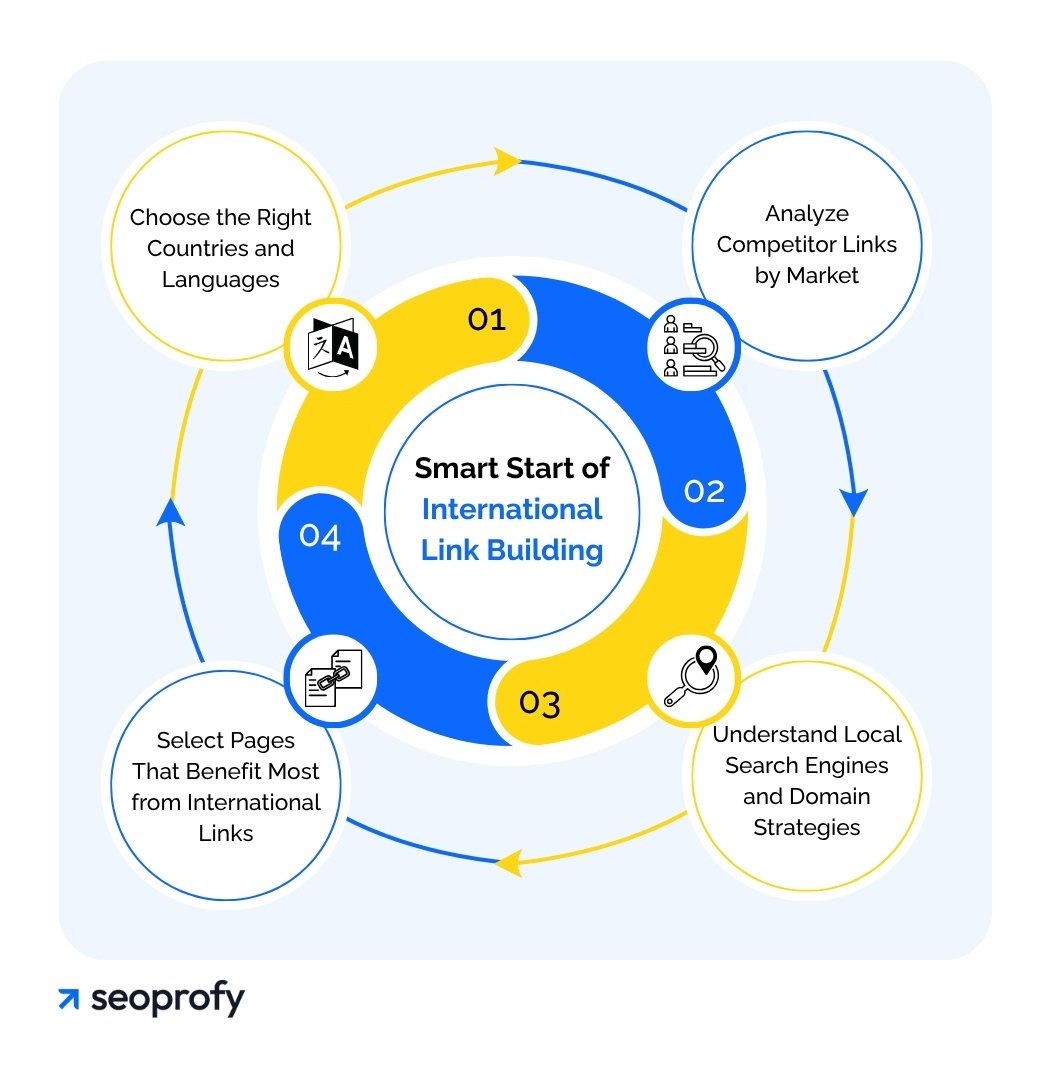
Before you start placing links, you need to know where and why. International link building only works when it’s tied to specific markets, pages, and goals. That’s what this prep stage is for.
Skip the prep, waste the effort.
Choose the Right Countries and Languages
International link building starts with market selection. You need to know exactly where to focus before pitching or prospecting.
Start with Google Analytics or GA4. Check which countries already bring traffic under Geo reports. Look for regions with decent session volume but low conversions or engagement. These are markets where backlinks can push your pages into stronger positions and boost traffic.
In Google Search Console, filter performance data by country and language. This shows where your site appears in search but underperforms in clicks or rankings.
To prioritize markets, combine:
- Existing traffic and impressions
- Local search demand (via Ahrefs or Semrush)
- Business relevance (based on leads or sales by region)
Validate keyword intent through local SERPs. Use VPN tools like Valentin.app or Nightwatch.io to simulate local results and autocomplete suggestions. Tools like AlsoAsked or Keyword Tool can surface language-specific phrasing.
Make sure your international site structure is clean. If you’re using subfolders, subdomains, or ccTLDs, confirm everything is crawlable and tied to a proper hreflang setup before building links to it.
Market analysis is one of the most difficult and high-stakes parts of international link building. Get it wrong and the whole strategy falls apart. A strong international SEO agency can take that off your plate and bring you a clear, well-researched direction.
Analyze Competitor Links by Market
Now it’s time to look over the fence. Check who’s ranking in your target countries and how they’re getting their links. Competitor backlink profiles show exactly what kinds of domains, anchors, and international link building strategies are helping them win visibility — and who you’ll be up against in local search engine rankings.
Use Ahrefs. Enter a competitor’s domain, then go to the Backlinks or Referring Domains report. Use the “Country” filter to isolate links coming from specific regions. This shows which markets they’re actively targeting.
Let’s say your competitor is Nike. If you open their main site at nike.com, you’ll notice that despite using a single .com domain, they’ve built a global structure using country and language-specific subfolders. For example, users in Morocco are served nike.com/ma/en/, while users in Germany might land on nike.com/de/.
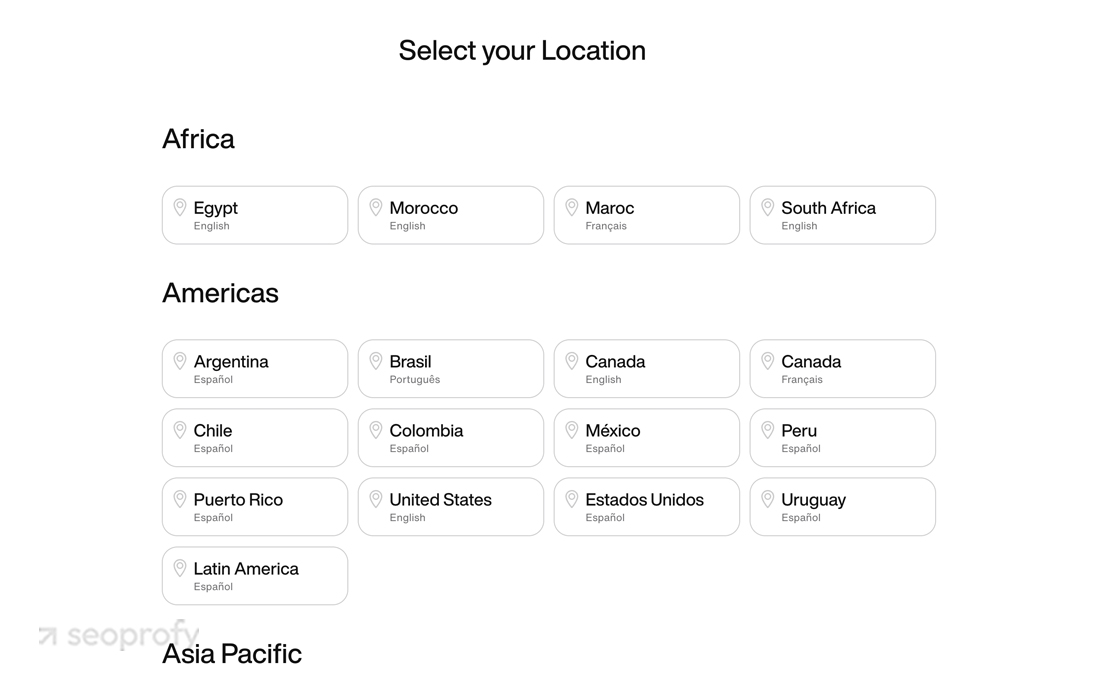

You open their referring domains by country code and see links coming from .uk, .de, .in, .fr, and .br. These are clearly key markets where they’ve invested in visibility.
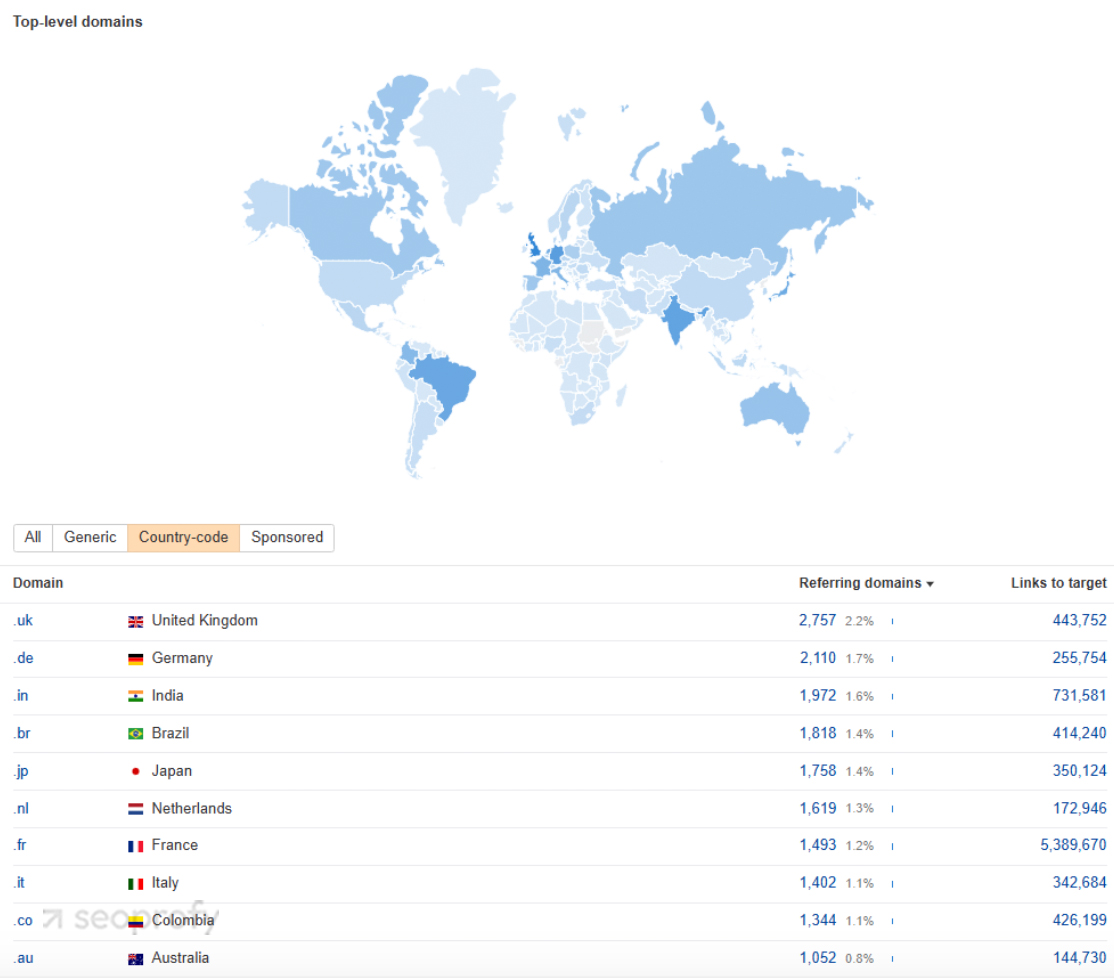
Then, switch to the “Languages” filter to see which content earns links in other languages. If a competitor has strong link velocity in a particular market, that’s likely where they’re investing.
Use Semrush or Majestic as alternatives. Both tools allow filtering by referring domain location or language. In Semrush, use the Backlink Analytics tool and segment by both TLD or IP location.
Look for patterns. Are they earning links from local blogs, directories, or media? Which pages get the most links by region? What anchors are used in local markets? Map your findings against your own profile. It’s a fast way to spot gaps and opportunities.
You can also conduct keyword research and analyze what terms your competitors rank for in other countries. Go to “Organic keywords” and filter by region using the dropdown. This shows which terms are driving traffic in each market. Use these insights to choose keywords that align with local demand.
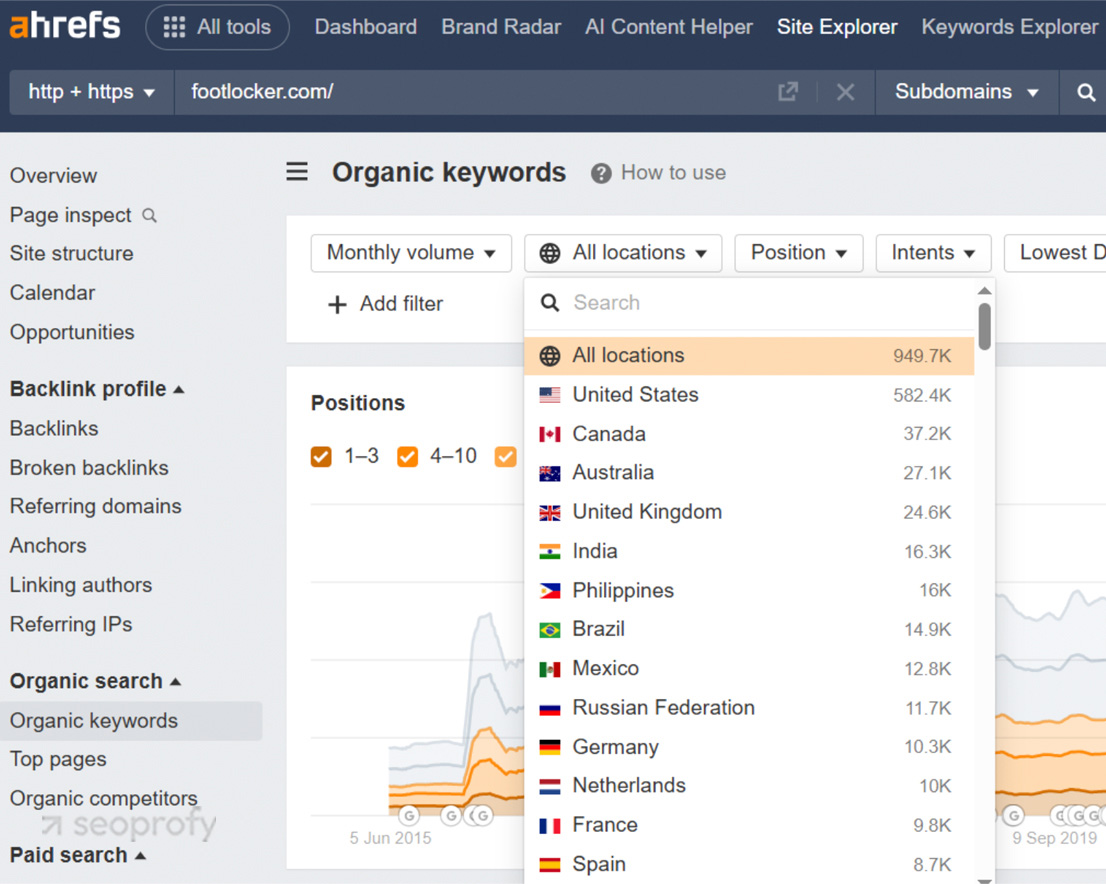
Understand Local Search Engines and Domain Strategies
While Google dominates in most markets, some countries rely on different engines. Yandex is still relevant in parts of Eastern Europe and Kazakhstan. Baidu leads in China. Naver is popular in South Korea. If you’re targeting these regions, your link building strategies for international SEO need to account for how these engines crawl, index, and evaluate links.
Here is the current market share for each major search engine provided by Statista. Use it to validate which engines matter in your target countries.
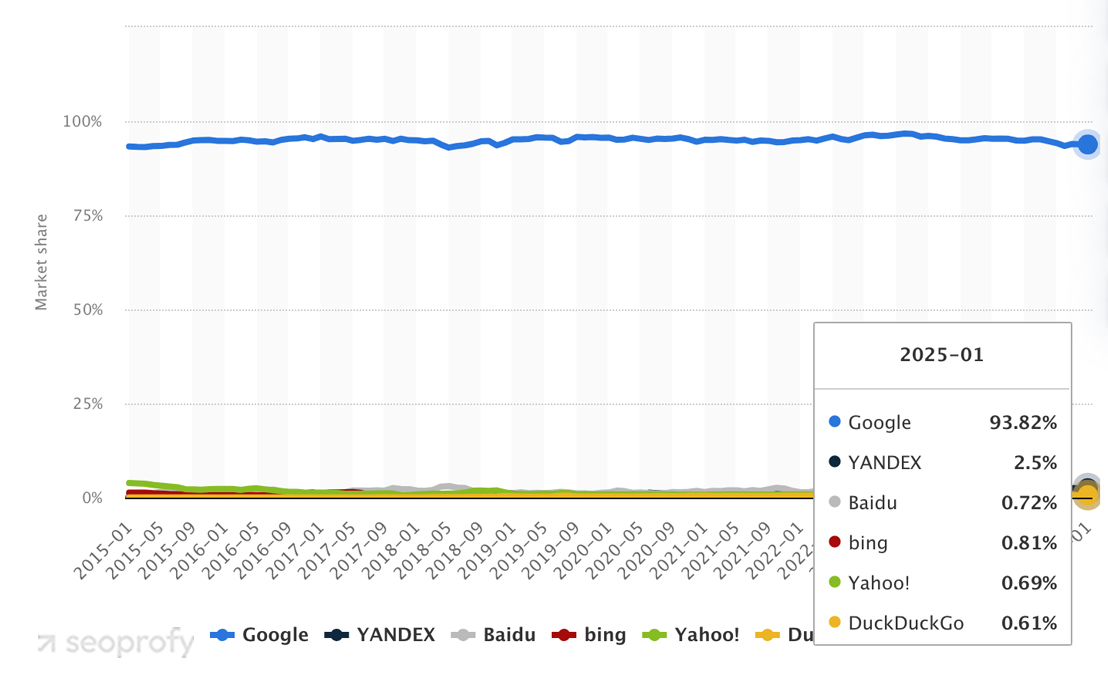
Next, review your domain structure. Most international websites use one of three setups:
- Country-code top-level domains (ccTLDs) like example.de
- Subdomains like de.example.com
- Subfolders like example.com/de/
Each option has trade-offs. ccTLDs offer stronger local signals but split domain authority. Subfolders consolidate a website’s authority and are easier to manage but may not feel as local to users. Subdomains sit somewhere in between.
Your domain strategy impacts how local links are interpreted. A backlink from a .fr domain to example.fr is treated differently than a link to example.com/fr/. Align your structure with your SEO goals before launching a link campaign.
Select Pages That Benefit Most from International Links
Not every page needs international backlinks. Focus on the ones that can actually rank, convert, or support your broader SEO goals in target regions.
In addition to identifying top-performing pages in Google Analytics and Search Console, which we covered earlier, focus on localized landing pages, high-value product or category pages, and long-form guides tailored to regional search intent. These are the assets most likely to gain visibility and drive conversions in country-specific search engine results pages.
For international link building, prioritize pages with both business impact and search potential. A quality link should bring link equity and push visibility where it matters, not just inflate your backlink count.
How to Find International Link Opportunities
Once the groundwork is done, it’s time to start looking for international link opportunities. There are many techniques out there, but we’ll focus on the ones that consistently deliver results. The last tactic is where things get interesting, so don’t miss it.
Using Competitor Analysis and Search Operators
Start with Ahrefs’ Link Intersect tool to find relevant sites that link to your competitors but not to you. This is one of the most practical strategies for international link building because it highlights sources that already give relevant links in your region. Filter by country or TLD to focus on opportunities specific to your target markets.
Next, use Google search operators to discover additional link building opportunities. For example:
- site:.de intitle:links “fashion blogs”
- site:.fr inurl:resources “email marketing”
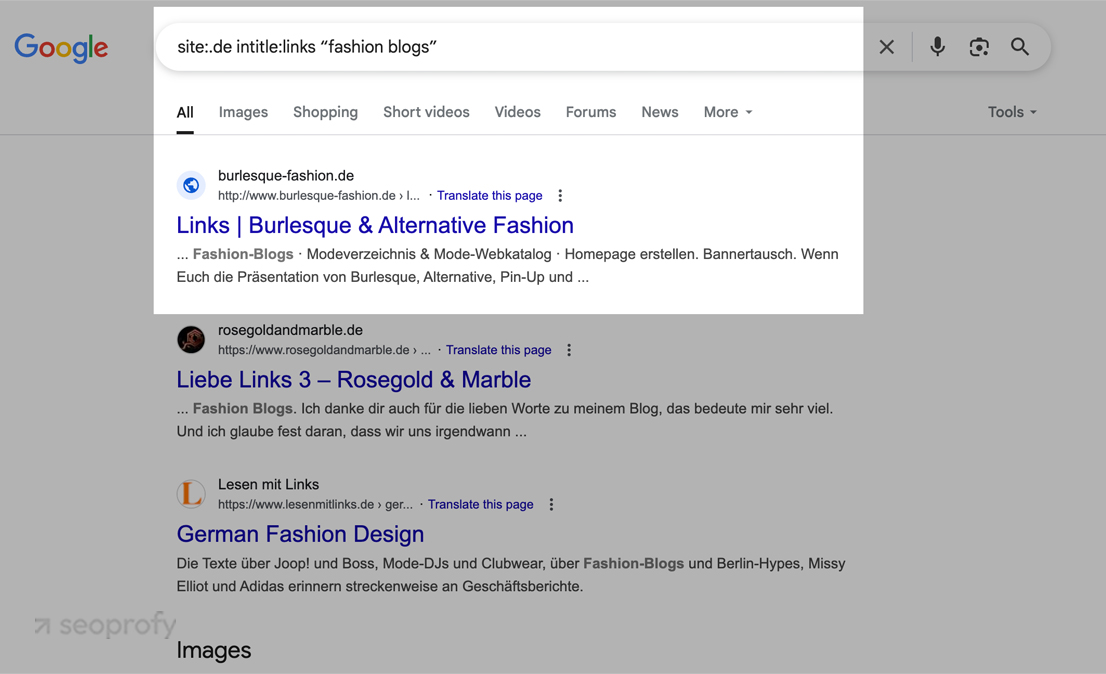
These queries surface regionally relevant pages that often link out to useful content. Combine this with “competitor name” plus terms like “mentioned in,” “featured by,” or “written by” in the local language to uncover unindexed mentions and potential outreach leads.
When done consistently, this approach reveals sources of high-quality links you can target in each local market without guessing. Always log your findings and validate domain quality before reaching out.
Exploring Local Directories, Industry Blogs, and Media Sites
To strengthen your international link building efforts, start by identifying high-authority websites in your target country. Use search operators like:
- site:.de intitle:directory “fashion”
- site:.fr inurl:/blog “contactez-nous”
- site:.it “avvocati directory”
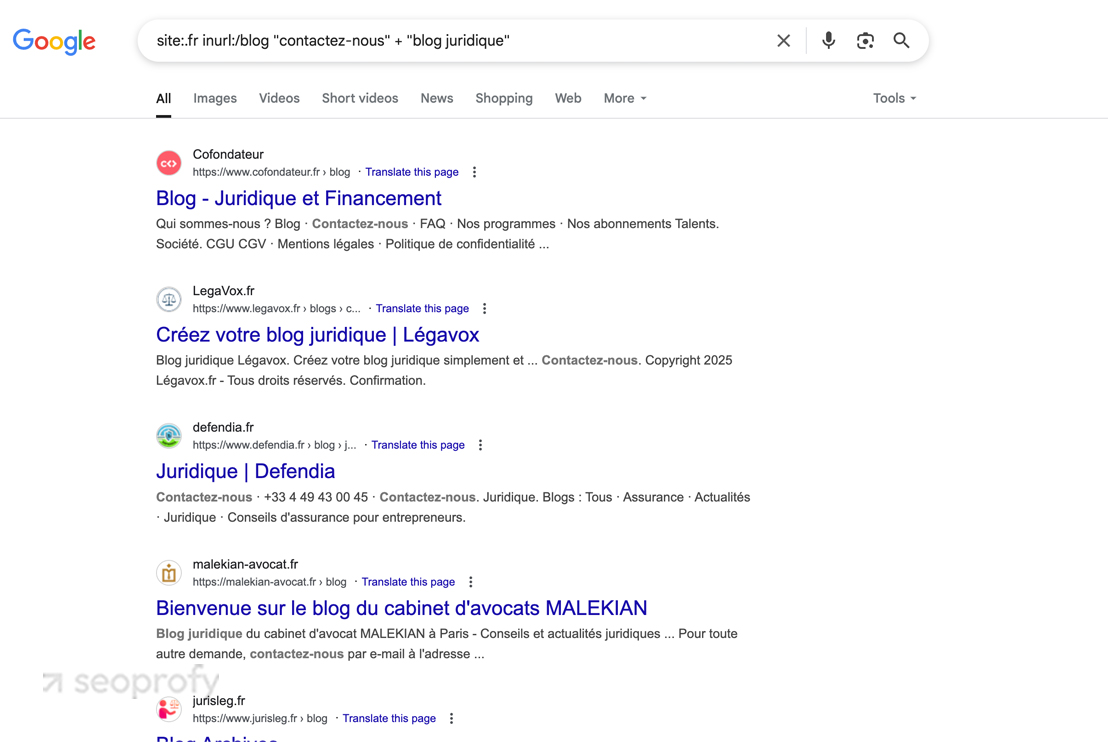
These help you surface local directory listings and industry-specific blogs that accept submissions, guest posts, or interviews. Filter results by language and check domain authority before pitching.
To find regional media sites, search for press pages using combinations like “contact the editor” + site:.nl or “press coverage” + your niche in the local language. Tools like BuzzSumo and Prowly also help discover local journalists and publishers.
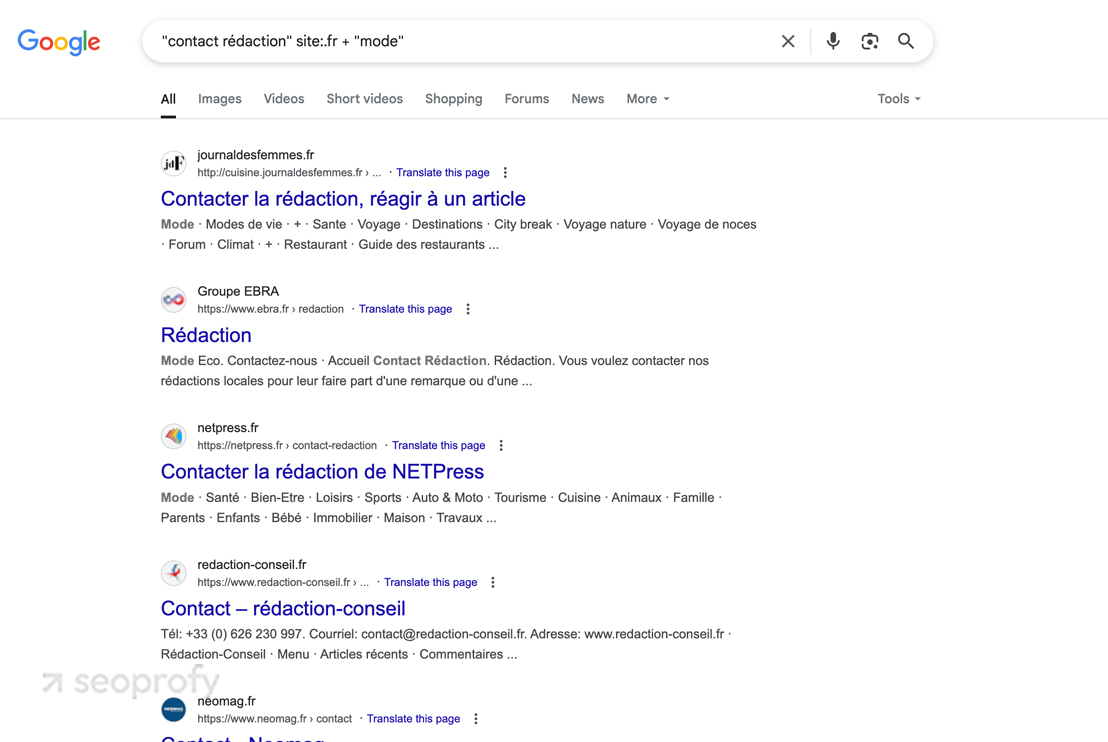
The right placements build local awareness. Focus on sources that speak to your target audience and support your visibility in that market.
Monitoring Unlinked Brand Mentions and Social Media Influencers
One of the fastest ways to build backlinks for international websites is by tracking unlinked brand mentions across different countries. Tools like Semrush or Brand24 can help you find websites and blogs that reference your brand without linking to it. Filter results by region or language to focus on the countries you are targeting.
Also, Ahrefs recently rolled out Brand Radar, a very handy tool for spotting unlinked mentions. You get relevant data in just a few clicks.
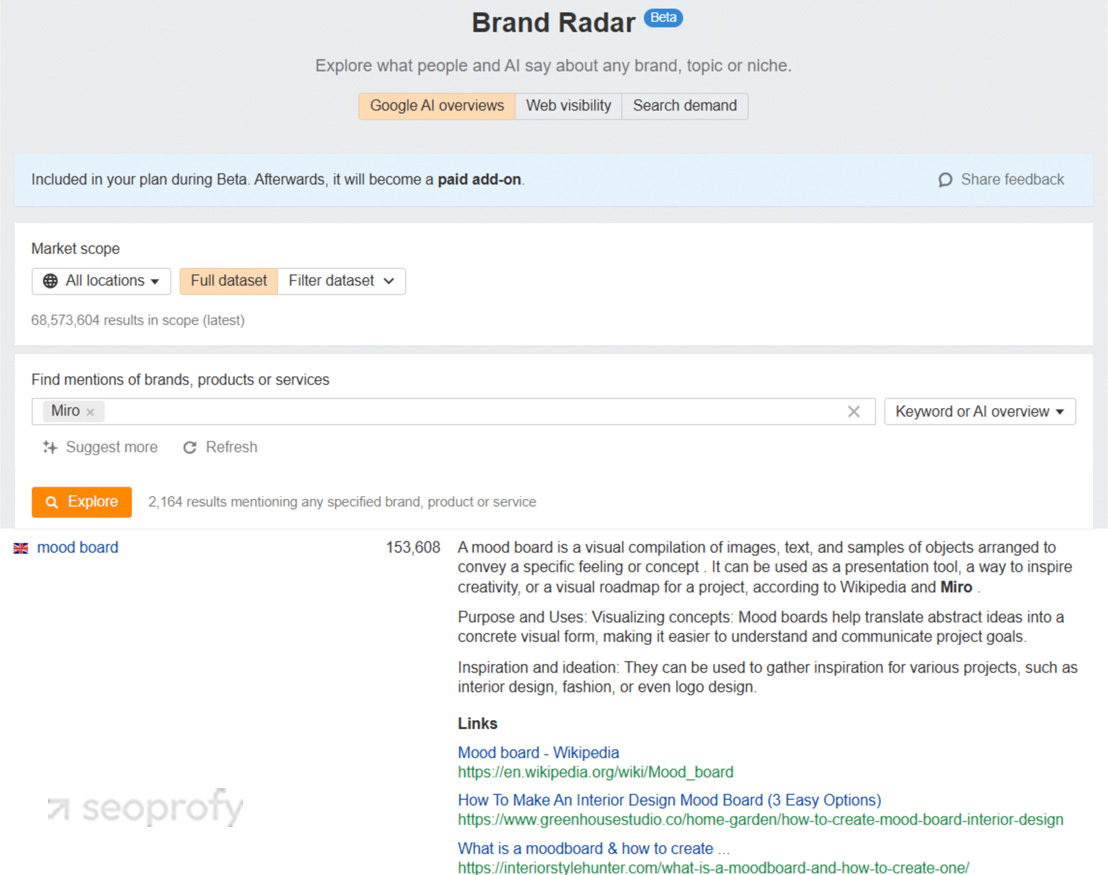
Reach out with a polite, localized message asking the site owner to add a link. Use tools like Hunter or the site’s contact page to find the right email. Since your brand is already mentioned, there’s a good chance they’ll agree to link back.
Another likely outcome, less aligned with white hat SEO principles? They may ask for a payment to add the link, even if the mention is already there. Unfortunately, that’s a common practice in many markets.
In parallel, identify social media influencers or bloggers active in your niche within specific countries. Blogger outreach tools like BuzzSumo, Upfluence, or Heepsy let you search by location and topic. Relationships with local influencers can lead to organic mentions, collaborations, and high-quality backlinks that help build authority in regional search results.
Outreach Tips for International Markets
You’ve identified international link opportunities. Now it’s time to start outreach. Outreach means contacting real people to earn real links. Here are the top practices that help you get better responses, stronger placements, and more links that actually stick.

Write Like a Local
Don’t translate your outreach email. Rewrite it for the market you’re targeting. Keep greetings, tone, and formatting aligned with local norms. In Germany, clarity and brevity are expected. In the US, a friendly but concise tone with a clear ask tends to perform best. In Eastern Europe, a more informal or creative approach often works better than rigid corporate language.
Always include the correct language version of your site in the pitch.
Use the Right Channel
In most regions, email is still the default. But in some countries, messaging apps work better. WhatsApp is common across parts of Europe and LATAM. In Southeast Asia, Line or Telegram may outperform email entirely. Research platform usage within your target country before initiating contact.
Personalize Smart
Surface-level personalization may not work as well as you expect in many global markets. Reference the recipient’s recent content, audience profile, or local trends. Adjust complexity and tone based on the market’s English fluency or use the native language if needed. Try to avoid US-centric language patterns in international SEO campaigns.
Use Tools That Adapt to Region
Use platforms like Pitchbox or BuzzStream to manage scale, but never sacrifice context. Segment campaigns by country, language, and content type. Ensure follow-ups respect local business hours and holidays.
Turn Media Into Backlinks
Press releases work best when localized. Write them in the native language and pitch them to regional journalists. Focus on niche relevance and avoid generic mass pitches.
Create Localizing Linkable Content
Content is the foundation of any international link building strategy, but to earn backlinks across regions, it needs more than accurate language. It needs to reflect how people in each local market search, read, and reference information. Localization is what makes that happen.
Localized content differs from translation in four key areas:
- It uses region-specific examples and references. For instance, Coca-Cola’s China site features news specific to the Chinese market, while the US version highlights entirely different content

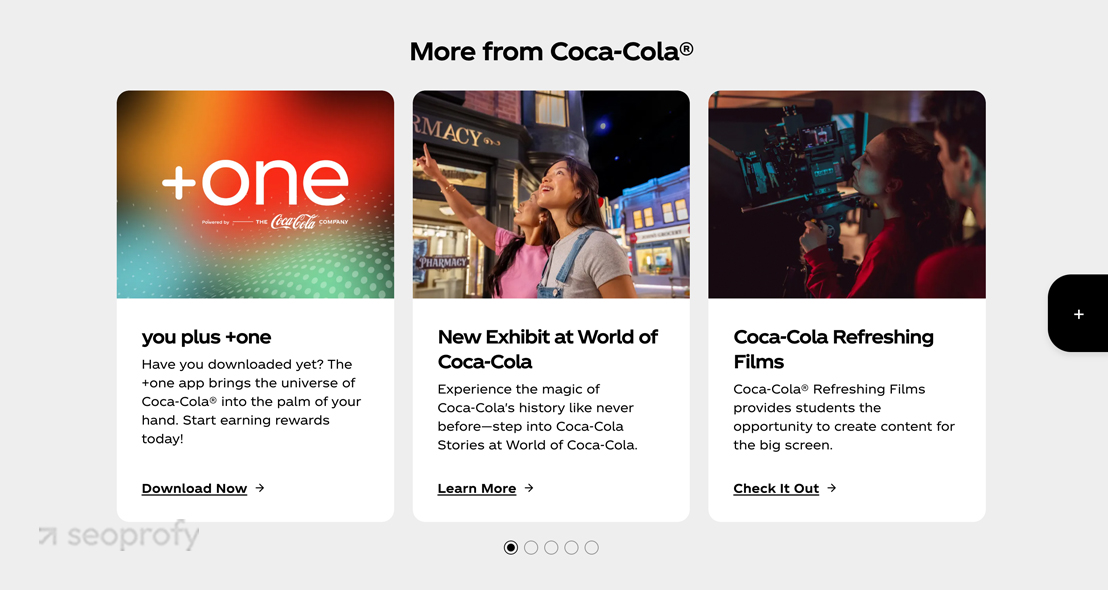
- It aligns with regional search behavior and query phrasing
- It reflects tone and formality norms. You can see the difference in tone on Nike’s Purpose page between the German and UK versions.


If your goal is to earn inbound links, treat localization like production, not post-processing.
Build pages from the ground up in the target language or write original drafts with local contributors. For multilingual scaling, hire native-speaking writers with topical knowledge. If that’s not possible, combine human translation with professional editing by someone who understands the industry.
When building links for global SEO, the type of content you publish matters as much as its localization. Some formats consistently attract mentions across markets because they offer clear, referenceable value. Focus on assets that answer recurring questions, simplify complex processes, or present localized insights no one else has published.
Examples that work across regions include:
- Step-by-step guides adapted to local tools, laws, or workflows
- Original research with region-specific data or comparisons
- Infographics that visualize local trends in a shareable format
- Checklists and templates aligned with local business practices.
To grow across borders, your backlinks must come from trusted, local sources. We help you get backlinks for international websites using research-driven, white-hat methods.
- Market-specific link plans
- Outreach in the target language
- Content optimized for local search

Common Challenges and How to Overcome Them
As a professional SEO team, we find the challenges of international link building campaigns are genuinely exciting. They keep the work interesting and push us to grow. We invite you to see them the same way and treat each one as part of the adventure.
Finding region-specific talent is harder than it looks
Outreach and content localization only work when handled by people who truly understand the culture. In the US or UK, finding a skilled outreach specialist or link builder is easy. But in other markets, where cultural expectations are more specific or less documented, the search takes more time and care.
Solution: If in-house isn’t realistic, work with regional consultants or agencies that already operate in those markets. It’s faster, safer, and more culturally aligned.
Limited high-quality link opportunities
Some markets have a reputation for being link deserts. India, Saudi Arabia, and parts of Southeast Asia are often cited as difficult due to the lack of trustworthy, editorially-driven websites.
Solution: In these cases, international link building efforts are more effective when they focus on local partnerships, influencer mentions, or niche aggregators instead of traditional outreach.
Legal and platform-specific restrictions
Not every SEO tactic travels well. In Germany and France, paid links can violate both Google’s guidelines and advertising laws. In China, South Korea, and Iran, government filters limit access to many global platforms entirely.
Solution: To stay compliant, make sure your strategy aligns with local marketing laws as well as international SEO guidelines.
Common Mistakes to Avoid
We’ve already shared some tips for international link building. Now, it’s time to talk about what to avoid so you don’t waste time, lose money, or miss out on high-value opportunities.
Using black-hat tactics
About 92% of marketing specialists believe that backlinks will remain a top ranking factor for the next few years. That’s why link buying is still popular… and often a waste of effort. Buying links in bulk from low-quality directories, running automated link schemes, or spamming forums might give a short-term boost but it’s a fast track to penalties.
In international SEO, where trust signals are harder to build, one bad link strategy can ruin months of work and force you to use disavow tools to recover. So when you come across offers like ten links pointing from forums for a few dollars on Fiverr, it’s best to just skip them.

Ignoring local SEO and language nuances
Building links from a site in the right country means little if the language, audience, or context are off. A backlink from a Spanish blog targeting Latin America won’t help your rankings in Spain greatly. Prioritize regional fit, not just domain extensions.
Overlooking audience intent and relevance
Backlinks should come from pages that serve the same user intent. A link from an unrelated directory or a random blog post adds no value and signals manipulation. Always ask: would someone actually click this link to learn more about what I offer? If the answer is no, it’s not a good fit.
Build a Long-Term International Link Building Strategy: Measure, Optimize, and Scale
An international link building strategy only works when the system is driven by data, strong partnerships, and continuous refinement. Now that you know how to build links for international SEO, let’s talk about keeping the results consistent.
First of all, partnerships require process. Once a link goes live, the real work starts. Follow up periodically, offer relevant updates, and build long-term collaboration.
At the same time, мarkets shift constantly, and your strategy must adapt. Run consistent analysis. Look for pages losing links, countries where visibility is growing or dropping, and shifts in ranking positions. Use SEO software like Ahrefs, Semrush, or Serpstat to support this.
Here are the key metrics to track:
- Growth in referring domains by country
- Organic traffic to link-supported pages
- Keyword rankings in target regions
- Share of links from priority markets
- Outreach reply rates
Once the system is in place, scale it carefully. Automate prospecting and outreach workflows where possible, but keep personalization where it impacts conversion. Tie international link building efforts to content localization, technical SEO, and UX improvements across regions. This is how building links for an international website becomes a repeatable process that helps dominate SERPs and expand global presence.
Wrapping Up
In this guide, you’ve seen a wide range of link building tips for international SEO. But what we’ve covered here is just a fraction of what real-world campaigns involve. From planning through to hands-on implementation, international link building brings unique challenges, and we’ve worked through them many times.
Our international link building service has helped businesses grow across borders, overcome language barriers, and earn mentions in markets that seemed out of reach. Want to see how we’ve delivered results in complex SEO scenarios? Browse our SEO case studies and let’s talk about how we can help you build international links that impact your bottom line.









